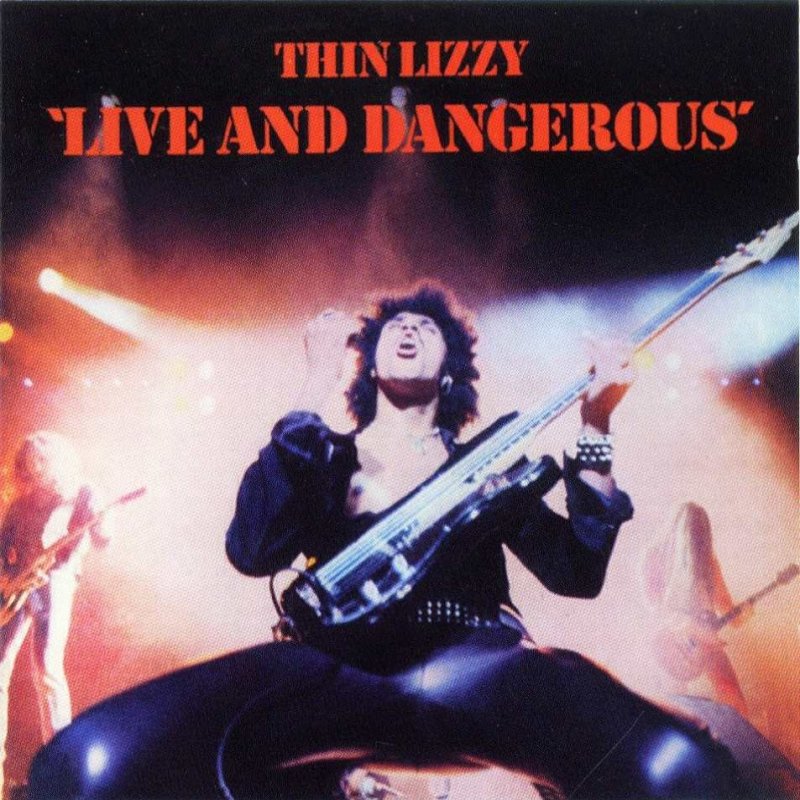The live album was a right of passage for the majority of 70s rockers. By and large it was a great leveller, as it could find otherwise massively successful acts amplify their lesser qualities (Led Zeppelin’s The Song Remains the Same, Yes’s Yesshows, etc), on the other hand it could be a handy document of an act that had hitherto failed to capture their live energy in the studio, but absolutely nailed it on stage night after night, especially when the tape started rolling (Humble Pie’s Performance: Rockin’ the Filmore, Cheap Trick at Budokan, etc).
Live and Dangerous is very much in this latter group, in fact some consider it to be the greatest live album ever released. While Thin Lizzy had been stalwarts of the rock scene since the early 70s, and they had eventually laid to rest the one hit wonder status they had gained with “Whiskey in the Jar”, with the anthemic “The Boys are Back in Town” and the accompanying Jailbreak album, none of their studio albums had really managed to reflect the majestic glory of Phil Lynott and the rest of Lizzy in full flight on stage. Live and Dangerous was the opportunity to right these wrongs with the assistance of super-producer Tony Visconti. The trouble was, Visconti was on a tight schedule, so rather than go through the rigmarole of writing a whole new album, they decided a live album was the way to go.
In the late 70s Thin Lizzy were at the absolute peak of their performance powers, so the timing to record their first live album couldn’t have been better. Live and Dangerous features Thin Lizzy tearing through their songbook, resulting in definitive versions of “Jailbreak”, “Dancing in the Moonlight (It’s Caught Me in Its Spotlight)”, “Don’t Believe a Word” and “The Rocker”, and it’s only the sheer familiarity of the studio version of “The Boys Are Back in Town” which lessens the impact of the live version here. Throughout all four sides of the original vinyl Lynott captures the attention, as does the unmistakable twin guitar attack of Brian Robertson and Scott Gorham, with Brian Downey proving to be one of the great underappreciated drummers of the era.
There has of course been much debate about how ‘live’ Live and Dangerous is, as tales of how extensive the studio overdubs on the album fluctuate wildly. Some claim that it’s effectively a studio album with crowd noise, others claim that the overdubs were kept to a minimum and were only done to make good significant imperfections in the source recordings. Whatever the truth is, Live and Dangerous is a great sounding album, it’s perfectly paced throughout and is the definitive document of Thin Lizzy in their prime. Sure, there’s the odd tasteless ad-lib from Lynott, but hey, it’s hard rock in the 70s, so that was pretty much par for the course, regardless of how unnecessary it was.
While multiple Best Ofs have been compiled over the years to try and capture Thin Lizzy’s appeal for newcomers, none have ever done the job better than Live and Dangerous. Indeed, for some, Live and Dangerous may be the only Thin Lizzy album they’ll ever need. Hell, even it’s laugh-out-loud funny cover is iconic.
Is it the greatest live album of all time? No. But it is the best Thin Lizzy album, and that’s no bad thing.














No Comment